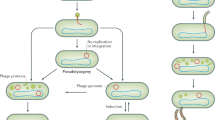Abstract
Diversity analysis has been performed routinely on microbiomes, including human viromes. Shared species analysis has been conducted only rarely, but it can be a powerful supplement to diversity analysis. In the present study, we conducted integrated diversity and shared species analyses of human viromes by reanalyzing three published datasets of human viromes with more than 250 samples from healthy vs. diseased individuals and/or rural vs. urban individuals. We found significant differences in the virome diversity measured in the Hill numbers between the healthy and diseased individuals, with diseased individuals exhibiting higher virome diversity than healthy individuals, and rural individual exhibiting higher virome diversity than urban individuals. We applied both “read randomization” and “sample randomization” algorithms to perform shared species analysis. With the more conservative sample randomization algorithm, the observed number of shared species was significantly smaller than the expected shared species in 50% (8 of 16) of the comparisons. These results suggest that integrated diversity and shared species analysis can offer more comprehensive insights in comparing human virome samples than standard diversity analysis alone with potentially powerful applications in differentiating the effects of diseases or other meta-factors.




Similar content being viewed by others
References
Gilani F (2017) Human microbiome. InnovAiT 10(12):762–764
Handley SA (2016) The virome: a missing component of biological interaction networks in health and disease. Genome Med 8:32
Abeles S, Robles-Sikisaka R, Ly M et al (2014) Human oral viruses are personal, persistent and gender-consistent. ISME J 8:1753–1767
Lecuit M, Eloit M (2013) The human virome: new tools and concepts. Trends Microbiol 21(10):510–515
Woolhouse ME, Howey R, Gaunt E et al (2008) Temporal trends in the discovery of human viruses. Proc Biol Sci 275:2111–2115
Wylie KM, Weinstock GM, Storch GA (2012) Emerging view of the human virome. Transl Res 160(4):283–290
Ajami NJ, Petrosino JF (2015) Toward the understanding of the human virome. Metagenom Microbiol 13(2):135–143
Ma ZS, Abdo Z, Forney LJ (2012) A bird’s eye view of microbial community dynamics. In: Ogilvie LA, Hirsch PR (eds) Microbial ecological theory: Current perspectives. Caister Academic Press, Poole
Renyi A (1961) On measures of information and entropy. In: Proceedings of the 4th Berkeley symposium on mathematics, statistics and probability, vol 1, pp 547–561
Hill MO (1973) Diversity and evenness: a unifying notation and its consequences. Ecology 54:327–342
Chao A, Chiu CH, Jost L (2014) Unifying species diversity, phylogenetic diversity, functional diversity and related similarity and differentiation measures through Hill numbers. Annu Rev Ecol Evolut Syst 45:297–324
Ellison AM (2010) Partitioning diversity. Ecology 91:1962–1963
Ma ZS, Li LW, Gotelli NJ (2019) Diversity-disease relationships and shared species analyses for human microbiome-associated diseases. ISME J 13:1911–1919
Anderson MJ, Crist TO, Chase JM et al (2011) Navigating the multiple meanings of beta-diversity: a roadmap for the practicing ecologist. Ecol Lett 14:19–28
Ma ZS, Li WD (2019) How and why men and women differ in their microbiomes: medical ecology and network analyses of the microgenderome. Adv Sci 6(23):1902054
Carding SR, Davis N, Hoyles L (2017) Review article: The human intestinal virome in health and disease. Aliment Pharmacol Ther 46(9):800–815
Gregory AC, Zablocki O, Zayed AA et al (2020) The gut virome database reveals age-dependent patterns of virome diversity in the human gut. Cell Host Microbe 28(5):724-740.e8
Zhao G, Wu G, Lim ES et al (2017) VirusSeeker, a computational pipeline for virus discovery and virome composition analysis. Virology 503:21–30
Chao A, Gotelli NJ, Hsieh TC et al (2014) Rarefaction and extrapolation with Hill numbers: a framework for sampling and estimation in species diversity studies. Ecol Monogr 84:45–67
Jost L (2007) Partitioning diversity into independent alpha and beta components. Ecology 88:2427–2439
Ma ZS, Li LW (2018) Measuring metagenome diversity and similarity with hill numbers. Mol Ecol Resour 18:1339–1355
Abbas AA, Diamond JM, Chehoud C et al (2017) The perioperative lung transplant virome: torque teno viruses are elevated in donor lungs and show divergent dynamics in primary graft dysfunction. Am J Transplant 17(5):1313–1324
Ma ZS, Li LW, Li WD (2018) Assessing and interpreting the within-body biogeography of human microbiome diversity. Front Microbiol 9:1619
Rosenberg E, Zilber-Rosenberg I (2018) The hologenome concept of evolution after 10 years. Microbiome 6(1):78
Siqueira JD, Dominguez-Bello MG, Contreras M et al (2018) Complex virome in feces from Amerindian children in isolated Amazonian villages. Nat Community 9(1):4270
Wang W, Jovel J, Halloran B et al (2015) Metagenomic analysis of microbiome in colon tissue from subjects with inflammatory bowel diseases reveals interplay of viruses and bacteria. Inflamm Bowel Dis 21(6):1419–1427
Zárate S, Taboada B, Yocupicio-Monroy M et al (2017) Human virome. Arch Med Res 48(8):701–716
Acknowledgements
This research received funding from the following sources: NSFC (Grant No. 31970116) to MA, “The Yunnan provincial department of education scientific research fund project” (No. 2019J0646) to HJC, #GREKF19-07 to HJC, and #GREKF20-06 to QL, both from “State Key Laboratory of Genetic Resources and Evolution”
Author information
Authors and Affiliations
Contributions
YTQ wrote the manuscript and interpret the results. STL prepared the figures. JMZ, QW and QL participated in interpretations of results. YTQ and HJC performed data analysis. ZSM designed the study. All authors approved the submission.
Corresponding author
Ethics declarations
Conflict of interest
The authors declare no conflict of interest.
Additional information
Handling Editor: Carolina Scagnolari.
Publisher's Note
Springer Nature remains neutral with regard to jurisdictional claims in published maps and institutional affiliations.
Supplementary Information
Below is the link to the electronic supplementary material.
Rights and permissions
About this article
Cite this article
Qiao, Y., Li, S., Zhang, J. et al. Integrated diversity and shared species analyses of human viromes. Arch Virol 166, 2743–2749 (2021). https://doi.org/10.1007/s00705-021-05157-0
Received:
Accepted:
Published:
Issue Date:
DOI: https://doi.org/10.1007/s00705-021-05157-0




